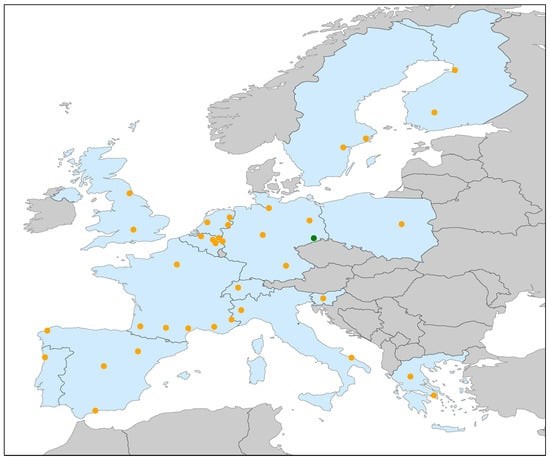Size Matters: Optimizing Your Advanced Air Mobility Air Taxi Fleet to Meet Scheduling and Traffic Demands
Dresden Researchers Show How to Optimize AAM Fleet Management

Planning aircraft fleet size based on current demands and future needs is tough enough for established air carriers that operate conventional aircraft. Taking into consideration things like expected demand, average load factors, and aircraft productivity – and getting it right – can make or break an air carrier’s bottom line. Fleet planning for an as-yet untested aircraft in a market where passenger demand and acceptance is still unknown is a greater challenge by an order-of-magnitude (or two!).
Nevertheless, undaunted by the challenge, a quartet of scientists from the Technical University of Dresden’s Institute of Logistics and Aviation, Martin Lindner, Robert Brühl, Marco Berger, and Hartmut Fricke took up the gauntlet and devised a method and a plan which future AAM fleet operators can use to maximize operational efficiencies and, in the process, improve service and enhance air taxi operators’ bottom lines. The result is their paper, “The Optimal Size of a Heterogeneous Air Taxi Fleet in Advanced Air Mobility: A Traffic Demand and Flight Scheduling Approach.”

Map of European cities and regions participating in the UIC2 initiative for the implementation of AAM. (Image copyright and courtesy of the Urban Air Mobility Initiative Cities Community (UIC2), an European Commission initiative within the Smart Cities Marketplace.)
How many passengers, how many eVTOLs, traffic patterns, and, of course: price
Many an airline has struggled with ‘getting it right’ in terms of what types of aircraft to buy, what size, which routes to operate, how much to charge, and the unpredictability of weather and/or mechanical delays on operations. And these carriers have a hundred-plus years of operational data from which to plan their schedules and fleet purchases. Advanced air mobility (AAM) operators don’t have that luxury. They’re going to have to figure it out with aircraft which have yet to be type-certified, infrastructure that is still in the planning stages, and passengers who probably don’t even know that they want, need, or could significantly benefit from this type of service to enhance their travel experience. So, what did these Dresdeners do?
They employed mobility data from a Dresden traffic survey and modal shift rates to estimate demand for AAM operations by organizing them into an air taxi rotation schedule using a Mixed Integer Linear Programming (MILP) optimization model and set a tolerance level for slight deviations from planned operations. They took into account flight performance, energy consumption, battery charging requirements and tailored them to three discrete types of air taxi fleets. Their theory, if proven accurate will yield an efficient computational time of 1.5 hours.
A Dozen (Trips) a Day x Optimal Travel Routes = Profitability for AAM Operators
Their methodologies provide insight into air taxi utilization, charging times across the route operations zone, and adapts to the uncertainties inherent in air traffic demand. The study shows an average productivity of 12 trips per day per eVTOL across routes from 13km (about 8 miles) to 99km (about 60 miles). The theory is this methodology, focused on commercial business travelers, operational considerations, and vertiport capacities, can guide the way for air taxi operators to meet customer demands and shareholders’ expectations. The shortest distance between two points is often a straight line. But when your straight line necessitates the third dimension of height, and the fourth dimension of time, a good plan is your best bet for success.

#AAM #advancedairmobility #UAM #eVTOL #MILP optimization, #aamtoday #air taxi


